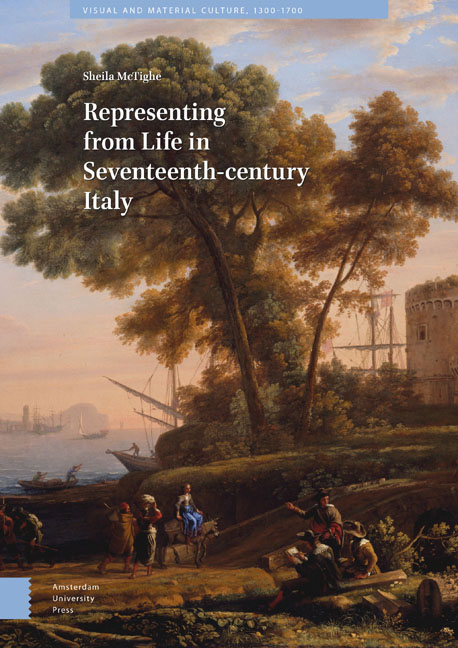Book contents
- Frontmatter
- Acknowledgements
- Contents
- Illustration List
- Introduction: Depicting from Life
- 1 Caravaggio’s Physiognomy
- 2 Jacques Callot, Drawing Dal Vivo around 1620: Commerce in Florence, Piracy on the High Seas
- 3 Jacques Callot’s Capricci di varie figure (1617): The Allusive Imagery of the Everyday, Represented ‘from Life’ and Emulating a Text
- 4 The Motif of the Shooting Man, and Capturing the Urban Scene: Claude Lorrain and the Bamboccianti
- 5 The Absent Eyewitness: the Revolt of Masaniello and Depiction Dal Vivo in the Middle of the Seventeenth Century
- Conclusion
- Index
- Frontmatter
- Acknowledgements
- Contents
- Illustration List
- Introduction: Depicting from Life
- 1 Caravaggio’s Physiognomy
- 2 Jacques Callot, Drawing Dal Vivo around 1620: Commerce in Florence, Piracy on the High Seas
- 3 Jacques Callot’s Capricci di varie figure (1617): The Allusive Imagery of the Everyday, Represented ‘from Life’ and Emulating a Text
- 4 The Motif of the Shooting Man, and Capturing the Urban Scene: Claude Lorrain and the Bamboccianti
- 5 The Absent Eyewitness: the Revolt of Masaniello and Depiction Dal Vivo in the Middle of the Seventeenth Century
- Conclusion
- Index
Summary
Abstract
The implications that follow on from this study may cause us to question more deeply the art theory or art criticism of this period. Representing from life involved different norms for judging the value of copies versus originals, of overt artistry versus a selfeffacement before nature, and of equating images with words.
Keywords: Bernini The Impresario, Giambattista Marino, The Domenichino Affair
Sculptor and impresario, Gianlorenzo Bernini was no enthusiast of Caravaggio's naturalism or of northern artists’ working practices. His transformations of his own models apparently owed more to study of Annibale Carracci's Roman work, with its naturalism mediated by a dynamic emulation of Raphael and classical sculpture. However, Bernini did once make a theatrical comment on the practice of drawing ad vivum, dal vivo. His comedy I due Covielli, put on in 1637 on an improvised stage in Piazza San Pietro, was created at a point when the popularity of Caravaggism and of other forms of naturalism had peaked in Rome. Bernini typically wrote, directed and acted in the play. The curtain opened to reveal to the audience that there was another audience depicted on the other side of the stage, and this second audience was also seated in the familiar terrain of the Vatican. Bernini and his brother then came on stage. The two men sat down, one facing the ‘real’ audience and the other facing the ‘feigned’ audience. Each then proceeded to sketch the view from where they sat, thus depicting, ad vivum, both the real and the represented topography.
Bernini and his brother enacted the by-then well-known motif of the draftsman at work within a drawing, and in putting it on stage, they exposed it as a comically empty cliché. The represented artist, representing things that we can see ourselves, is hardly a riveting sight on the stage. Doubling this action, and positioning each artist so that they faced the real and the represented audiences simultaneously, at least made a witty play on the old theatrical pleasure of tricking the eye of the beholder. Which of these two divided realities was an imitation, and which the real?
- Type
- Chapter
- Information
- Representing from Life in Seventeenth-century Italy , pp. 245 - 248Publisher: Amsterdam University PressPrint publication year: 2020



